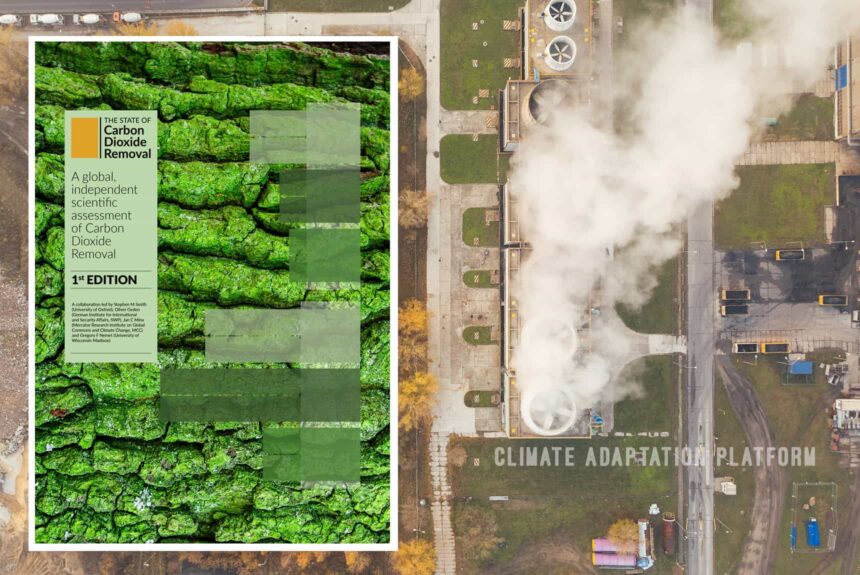Countries’ carbon removal efforts are way off from meeting their pledge to limit global warming between 1.5°C to 2°C.
This is according to a new report, the first edition of “The State of Carbon Dioxide Removal Report”, a first comprehensive global assessment of the current state of Carbon Dioxide Removal (CDR).
Meeting the Paris Agreement will entail implementing carbon emissions reductions and scrubbing or sucking CO2 from the atmosphere. And both efforts are not fast enough and not at the scale required to meet the countries’ pledge to limit warming within 1.5°C or below 2°C, the report says.
The report, led by the University of Oxford’s Smith School of Enterprise and the Environment, finds a massive gap between current actions- the amount of carbon dioxide planned or implemented worldwide and those required to achieve the Paris temperature goals.
According to the authors closing the gap will require removing between 450 billion to 1,200 billion tonnes of CO2 in the atmosphere by 2100, and this depends on how fast we can slash CO2 emissions as well – ideally, ten times what we emit now, or half of what is released since 1850 when industrial emissions started.
CDR involves capturing atmospheric CO2 and storing it safely on land, in the ocean, in geological formations, or in products. CDR includes reforestation, biochar, Bioenergy with Carbon Capture and Storage (BECCS), and Direct Air Carbon Capture and Storage (DACCS).
The study estimates that the world is removing or scrubbing around 2 billion metric tons of CO2 annually. This is mainly done through conventional land-based strategies such as afforestation, reforestation, and forest management, and only a tiny fraction uses novel methods like BECCS, Biochar, and DACC. Closing the gap to achieve the Paris Agreement goal will require a rapid growth of novel CDR.
Regarding the rapid uptake of the CDR strategies, Gregory Nemet, an environmental policy expert at the University of Wisconsin and one of the report’s co-authors, says, “Carbon removal looks a lot like renewables did like 25 years ago” (Harvey, 2023).
“Interesting technology: [It] could be really helpful for climate change, but [it’s] still small and not taken very seriously — in part because there wasn’t a lot of data about how much these technologies cost, how much we would need or how much there even was” (Harvey, 2023).
CDR is critical in also allowing countries to reach their net-zero targets faster or within a few decades, partly due to some industries and sectors being hard to decarbonise fully, and CDR can be very useful.
While CDR is not a replacement for other climate actions, including nature-based solutions, climate adaptation, and others to address climate change, cutting emissions should take the top priority in addressing climate change.
According to the authors, the report will be the first of many to come.
This is so that they can continually “track the CDR gap and provide a clear, authoritative, and up-to-date snapshot and serve as an information resource for those who are making decisions about CDR and its role in meeting climate goals.”
Access the entire report: The State of Carbon Dioxide Removal
Watch the launch event of the report:
Source:
Discover the first comprehensive global assessment of the current state of Carbon Dioxide Removal. (2023). The State of Carbon Dioxide Removal. Retrieved from https://www.stateofcdr.org/
Harvey, C. (2023, January 19). Global Carbon Removal Efforts Are Off Track for Meeting Climate Goals. Scientific American. Retrieved from https://www.scientificamerican.com/article/global-carbon-removal-efforts-are-off-track-for-meeting-climate-goals/
The State of Carbon Dioxide Removal report launch. (20 January 2023). The Smith School. [Video file]. Retrieved from https://www.youtube.com/watch?v=fUDZ2vSwjs0



Leave a Reply